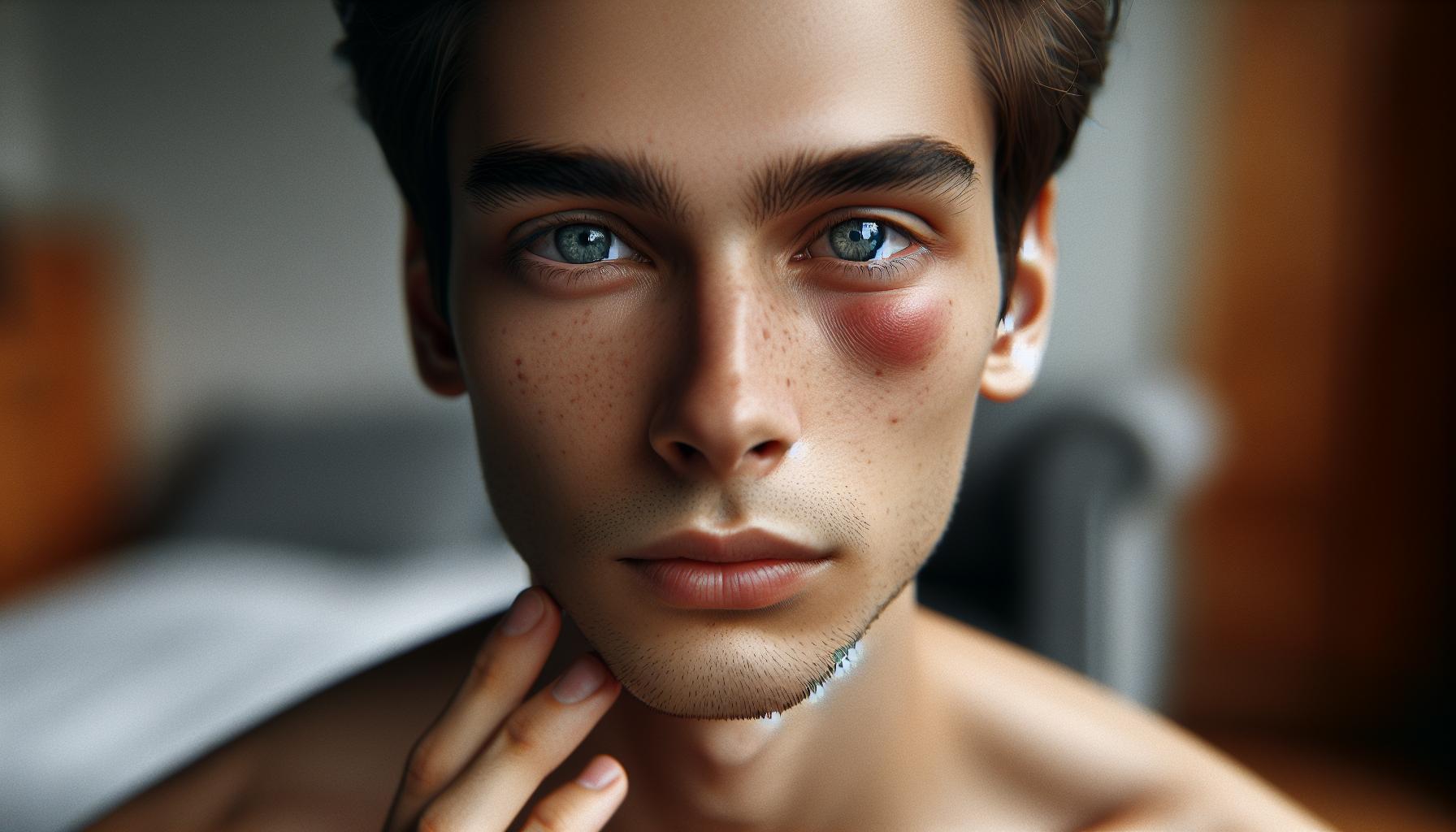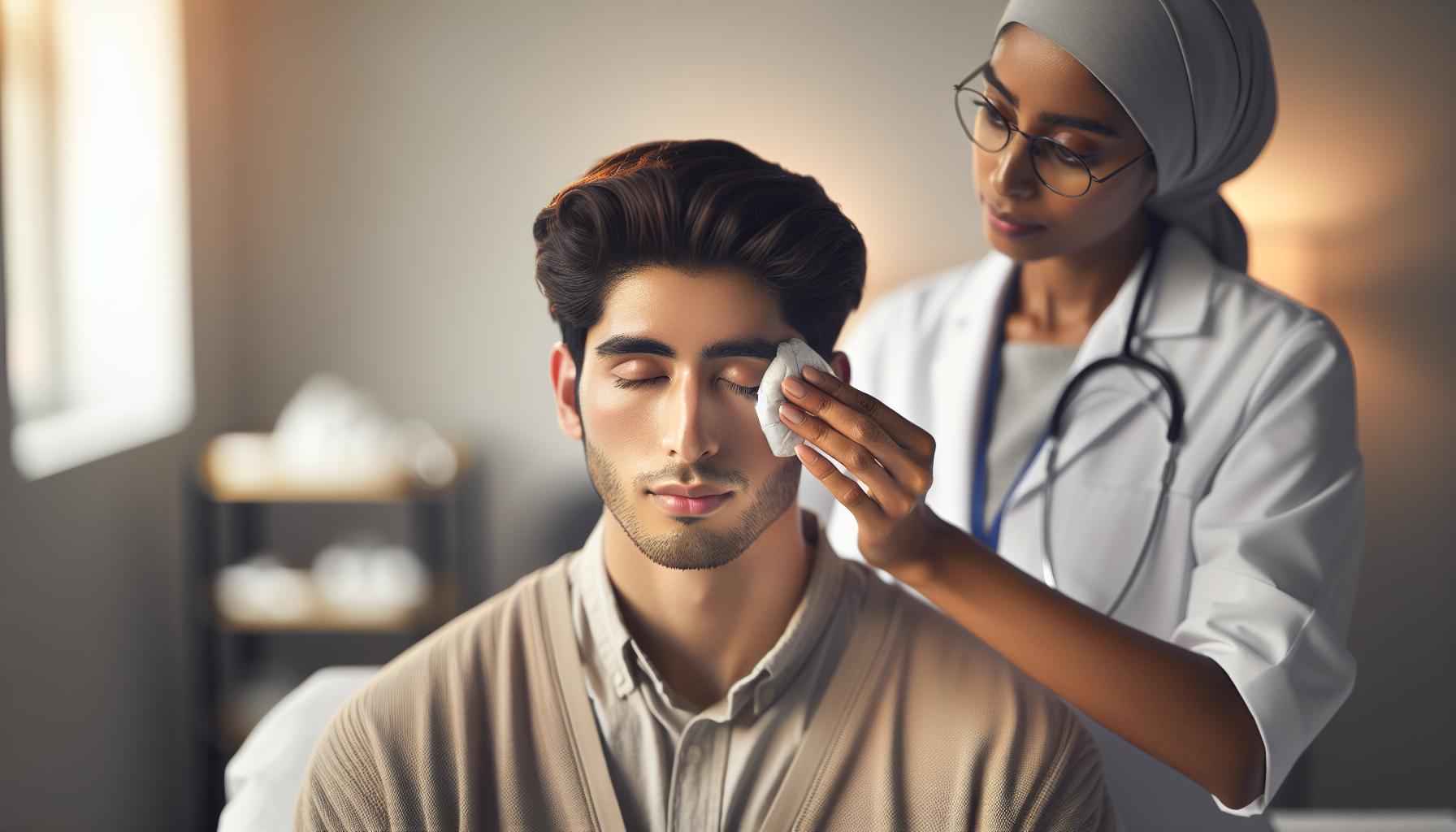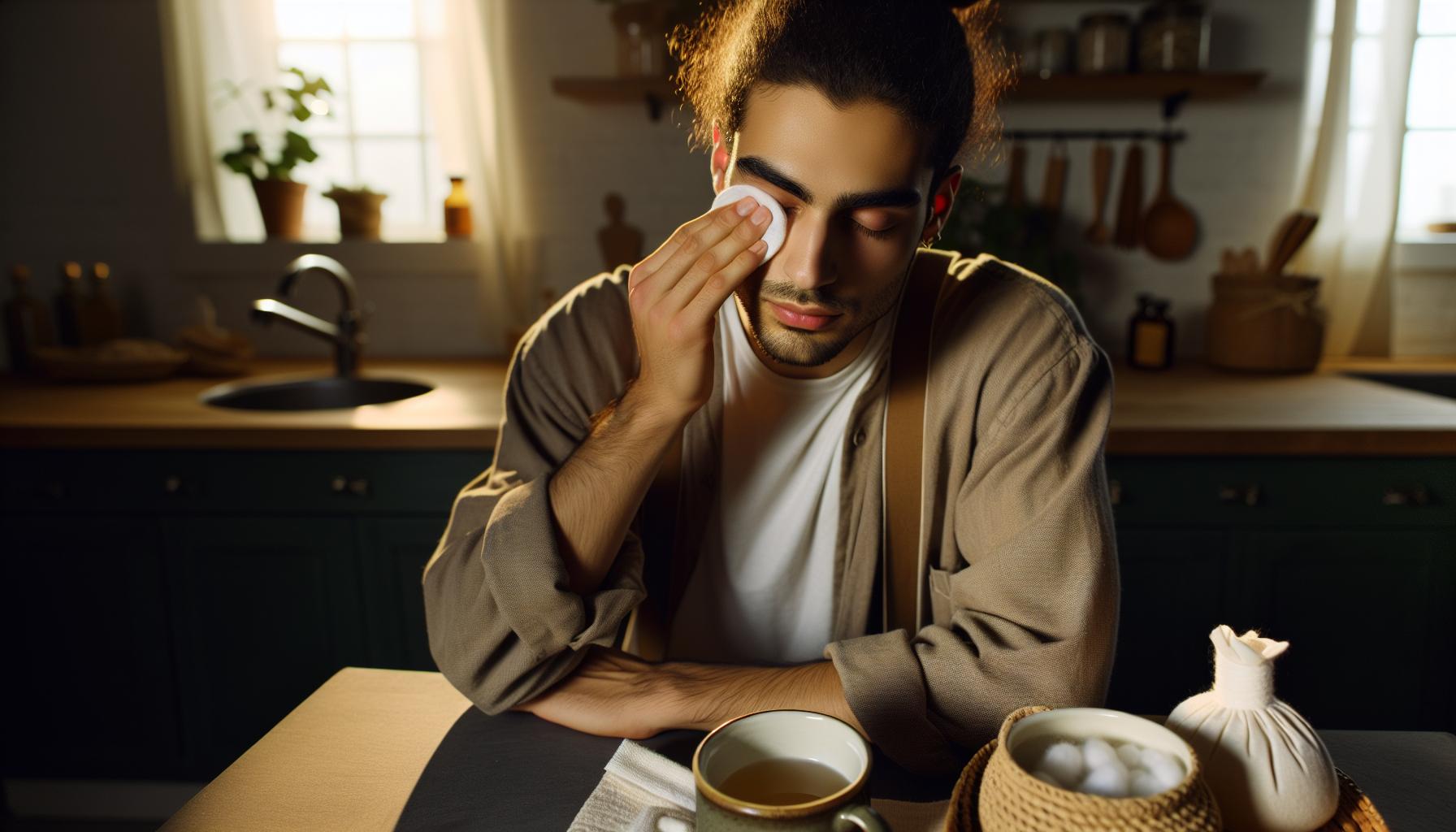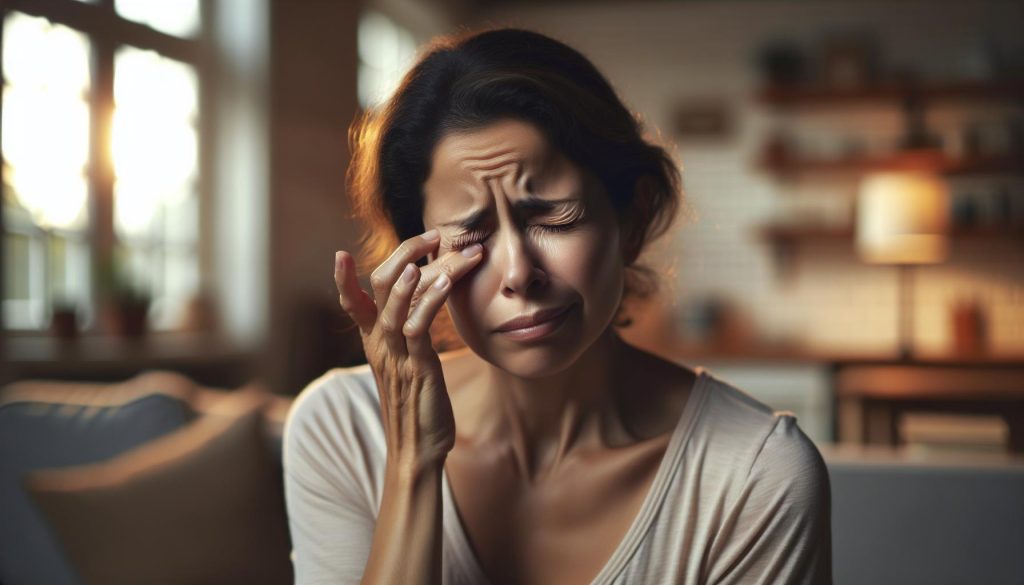A stye, often recognizable by swelling and tenderness on the eyelid, can be both bothersome and alarming. Understanding the specific patterns of swelling can provide valuable insights into your eye health and help you decide on the best course of action for relief. Whether it’s a minor annoyance or a recurrent issue, deciphering the signs your eye is giving you is crucial in managing a stye effectively.
This article delves into the various swelling patterns associated with styes, empowering you with knowledge and practical tips to care for your eyes. Discovering the underlying causes and symptoms can not only alleviate discomfort but also take proactive steps towards better eye health. Join us as we explore what these swelling patterns mean and how you can tackle them with confidence and ease.
Understanding Styes: Causes and Symptoms

A stye, which is a common eye condition, can lead to discomfort and visible swelling that might raise concerns about your eye health. This localized swelling occurs when bacteria infect the oil glands at the base of your eyelashes, resulting in a painful lump that resembles a pimple or boil. In most cases, the swelling is harmless and typically resolves within a week or two, but understanding the causes and symptoms can help you manage the condition effectively.
Styes are primarily caused by bacterial infections resulting from blocked glands, poor hygiene, or even stress. Specific risk factors include touching your eyes with unwashed hands, using old or contaminated cosmetics, and underlying skin conditions such as blepharitis. Symptoms often include redness, swelling, and tenderness around the eyelid, with the lump feeling warm to the touch. In addition to these physical signs, you may experience discomfort when blinking, and sometimes, the affected eye may tear more than usual.
To alleviate discomfort and support healing, practicing good hygiene is essential. Ensure you wash your hands regularly and avoid squeezing or attempting to pop the stye, as this can spread bacteria and prolong recovery. Gentle warmth applied to the area using a clean washcloth for about 10 minutes several times a day can also help open the clogged gland, facilitating drainage and providing relief. Moreover, if you notice persistent swelling or other concerning symptoms, it’s advisable to consult a healthcare professional for tailored advice and potential treatments.
Common Swelling Patterns Around the Eye

Swelling around the eye can be quite concerning, especially when linked to a stye. This localized swelling typically manifests as a painful bump, but the patterns of swelling can vary significantly based on the underlying issue. Generally, styes will present localized swelling primarily located at the eyelash line where the infection occurs, resulting in a red and tender bump that may make blinking uncomfortable and cause increased tearing. However, other swelling patterns can signify different problems, and understanding these variations is crucial.
When examining swelling patterns, one common type is puffy eyelids, which may not always indicate a stye. This general swelling can arise from allergies, lack of sleep, or excessive crying, often resulting in a more diffuse appearance than the localized bump of a stye. On the other hand, if you notice swelling that encompasses the entire eyelid area-particularly if accompanied by redness and discharge-it could be indicative of conjunctivitis or another infection requiring attention.
It’s also essential to differentiate between a stye and a chalazion, another eyelid condition. A chalazion typically grows more slowly and may not be painful, but it can result in swelling that feels firm and rubbery, often more central on the eyelid than the painful red bump of a stye. This differentiation is vital for effective treatment, as chalazia often require different home care strategies or medical interventions than styes do.
In the context of managing swelling, tracking these patterns can provide valuable insights into the appropriate steps for care. For instance, if swelling accompanies clear discharge and itching, it may suggest an allergic reaction, necessitating antihistamines or cold compresses to reduce inflammation. Recognizing these signs and their meanings not only empowers you in your eye health journey but also helps you communicate effectively with healthcare providers should further medical advice be needed.
Effective Treatments for Eyelid Swelling

When you experience eyelid swelling, particularly due to styes, taking immediate and effective action can alleviate discomfort and expedite recovery. Various treatment strategies are available, tailored to the underlying cause of the swelling. Understanding these options can empower you to manage symptoms effectively and maintain your eye health.
One of the first steps in treating eyelid swelling from a stye is to apply warm compresses. Doing this for 10 to 15 minutes several times a day can help promote drainage and reduce inflammation. The warmth encourages blood circulation, which aids in healing. To create a warm compress, simply soak a clean cloth in warm (not hot) water, wring it out, and gently place it over your closed eye.
In addition to warm compresses, over-the-counter pain relief medications such as ibuprofen or acetaminophen can help ease discomfort associated with swelling. If allergic reactions are a contributing factor, antihistamines can be beneficial in reducing inflammation and itchiness. Using over-the-counter hydrocortisone cream on the eyelid can also be an option, but consult a healthcare professional before applying anything near the eyes to ensure safety.
When to consider medical intervention: If your stye does not improve after a few days of home treatment, or if the swelling worsens, it’s essential to seek medical advice. Persistent swelling, especially if accompanied by significant pain, fever, or changes in vision, may indicate a more serious condition that requires antibiotic treatment or surgical drainage.
Finally, maintaining good hygiene is crucial for preventing recurrence. Regularly washing your hands and avoiding touching your eyes can help reduce the chances of infections. If you wear makeup, ensure all products are clean and replace any that might have been contaminated. These proactive measures not only help in treating current issues but also promote long-term eye health.
At-Home Remedies for Styes and Swelling

Applying simple yet effective at-home remedies can significantly enhance your comfort if you’re dealing with styes and accompanying swelling. One of the most time-honored treatments is the warm compress, which is not only easy to do but also incredibly soothing. To create a warm compress, take a clean cloth or a dedicated eye mask, soak it in warm (not hot) water, wring it out, and gently place it over your closed eye for 10-15 minutes. This practice helps to reduce swelling and encourages drainage of the pimple-like bump, reducing inflammation and promoting healing. Aim to repeat this several times a day for optimal results.
In addition to warm compresses, over-the-counter medications can also provide relief. Anti-inflammatory medications such as ibuprofen or acetaminophen can help alleviate pain and reduce swelling. If allergies are contributing to your eye irritation, consider taking an antihistamine to ease symptoms. Another helpful approach is using a mild over-the-counter hydrocortisone cream; however, be cautious and consult with a healthcare professional before applying any creams near your eyes.
Maintaining a clean eyelid environment can help prevent further irritation. Make it a routine to carefully cleanse your eyelids daily. Use a gentle eyelid scrub or diluted baby shampoo on a cotton pad to remove debris and oils that might clog the glands near your eyelashes. Incorporating these habits, alongside your warm compress regimen, will improve your eye health and help stave off future styes.
Lastly, avoid touching or rubbing your eyes, as doing so can introduce more bacteria and exacerbate the issue. When dealing with make-up, ensure that brushes and products are clean and that any potentially contaminated items are properly disposed of. These simple yet powerful steps form the cornerstone of effective at-home care for styes and eyelid swelling.
When to Seek Medical Attention for Eye Swelling
Recognizing is crucial, especially if you suspect a stye is behind your discomfort. Styes, while often benign and treatable at home, can occasionally signal underlying issues that require professional evaluation. If you experience persistent swelling that lasts more than a few days despite home treatments, it is important to consult a healthcare provider. This may indicate an infection that could benefit from medical intervention, such as antibiotics or a specific treatment plan tailored to your situation.
Additionally, if the swelling is accompanied by significant pain, vision changes, or redness that spreads beyond the eyelid, it is vital to seek help promptly. These symptoms could be signs of more severe conditions, such as cellulitis or other infections that can affect not just the eye but the surrounding tissues as well. A healthcare professional will be able to determine the right course of action, potentially preventing complications.
When assessing your symptoms, take note of any unusual changes, such as the presence of pus or discharge, fever, or overall malaise. These can indicate a serious infection requiring immediate medical attention. Always trust your instincts; if you feel that something is not right with your eye health, it’s better to err on the side of caution and consult with a qualified professional to rule out any serious conditions.
Practicing good eye hygiene and being aware of your body’s signals plays a key role in maintaining eye health. Always prioritize self-care, but remember that timely medical intervention can make all the difference in preserving your eyesight and overall wellness.
Preventative Measures to Avoid Styes
Maintaining good eye health is crucial, especially when it comes to preventing styes, which are common yet often unwelcome visitors. One effective way to keep styes at bay is through consistent and proper hygiene practices around the eyes. This includes washing your hands frequently and avoiding touching your eyes. If you wear makeup, always remove it thoroughly at the end of the day to prevent the buildup of bacteria. Additionally, keeping your eye makeup tools clean and regularly replacing old makeup can reduce the risk of infection.
Another essential aspect of prevention is managing underlying conditions that might contribute to the development of styes. For those with oily skin or conditions like blepharitis (inflammation of the eyelids), regular eyelid scrubs can be beneficial. These scrubs help to open the oil glands on the eyelid margins, reducing blockages that may lead to infection and swelling. Over-the-counter eyelid wipes or gentle cleansers can effectively do this.
Practicing good overall health habits also plays a role in preventing styes. A balanced diet rich in vitamins-especially vitamins A, C, and E-can support skin health and immunity. Staying hydrated and managing stress levels through activities like yoga or meditation can strengthen your body’s defense mechanisms, making you less susceptible to infections.
It’s also wise to protect your eyes from environmental irritants. Wearing sunglasses in bright sunlight or when it’s windy can help shield your eyes from dust and pollutants that may lead to irritation and subsequent infection. If you’re prone to styes, consider using hypoallergenic products to avoid introducing allergens that might trigger inflammation.
By incorporating these preventative strategies into your daily routine, you can empower yourself to maintain the health of your eyes and wardrobe vibrantly, reducing the chances of dealing with the discomfort of a stye in the future. Stay vigilant and proactive about your eye care, and remember that small, consistent actions can lead to significant improvements in your eye health.
The Role of Allergies in Eye Swelling
Swelling around the eyes can be a common sight for many, yet it often sparks concern and confusion. Allergies play a significant role in causing eye swelling, as they trigger inflammatory responses that impact sensitive skin tissue around the eyes. When allergens, like pollen, pet dander, or dust mites, come into contact with your eyes, your body’s immune system reacts by releasing histamines. This reaction leads to not only swelling but also redness, itching, and watering of the eyes-symptoms that can easily mimic conditions like styes.
Understanding the link between allergies and eye swelling is crucial for effective management. If you’re frequently experiencing swelling, consider keeping track of your symptoms, looking for patterns that correspond with exposure to potential allergens. For example, if your eyes swell after spending time outdoors during high pollen seasons, this may indicate a seasonal allergy. You might find it beneficial to use over-the-counter antihistamines or anti-allergy eye drops to help reduce these effects. Pairing these treatments with cold compresses can further soothe the discomfort, providing immediate relief from swelling.
To minimize the risk of allergic reactions that lead to eye swelling, adopting a proactive approach to your environment is essential. Regularly cleaning your living spaces to reduce dust and pet dander can help lessen exposure to triggers. Additionally, wearing protective eyewear in environments known to harbor allergens, such as during yard work or in dusty settings, can shield your eyes and prevent irritation. Maintaining a balanced skincare routine that incorporates non-irritating, hypoallergenic products can also further protect the delicate area around the eyes.
Ultimately, if you find persistent swelling or discomfort despite taking preventive measures, it may be wise to consult a healthcare professional. They can provide tailored strategies and possibly recommend allergy testing to identify specific triggers. Recognizing and addressing equips you to take steps toward effective management, helping you reclaim comfort and confidence in your daily routine.
Understanding Other Causes of Eye Swelling
Swelling around the eyes can stem from a variety of causes, sometimes leaving you bewildered about the underlying issues. While styes, which are painful bumps caused by blocked glands, are often suspected, other factors contribute to this discomfort. For instance, infections-both viral and bacterial-can lead to swelling as the body reacts to fight off intruders. Conditions such as conjunctivitis, or pink eye, commonly present with not just eye redness but also puffiness and discomfort, making understanding the cause critical for effective treatment.
Moreover, systemic health issues like thyroid disease or kidney conditions can manifest through swelling around the eyes. In thyroid disorders, for example, the body’s metabolism affects fluid retention, sometimes resulting in bags under the eyes that can fluctuate in size depending on your body’s current state. Identifying these symptoms early on can lead to prompt medical evaluation and treatment to avoid further complications.
Stress and fatigue also play vital roles in eye swelling. Lack of sleep or emotional stress adversely affects your overall wellbeing, often manifesting in visible ways such as puffiness around the eyes. Incorporating stress management techniques and ensuring that you’re getting enough rest can be simple yet effective strategies in reducing eye swelling linked to these lifestyle factors.
In addition to these factors, a diet high in salt can cause the body to retain water, leading to noticeable swelling around the eyes. Staying hydrated and maintaining a well-balanced diet rich in fruits, vegetables, and whole grains can aid in mitigating this issue. Ultimately, recognizing the myriad of causes behind eye swelling not only helps in self-management but empowers you to seek appropriate care when necessary. Understanding these factors encourages a proactive approach to your eye health, enabling you to maintain your natural radiance.
Eye Care Tips for Sensitive Skin
Sensitive skin around the eyes requires special attention, especially when dealing with conditions like styes or general swelling. The delicate skin of this area can easily become irritated, making it essential to adopt gentle yet effective skincare practices. First and foremost, maintaining hydration is crucial. Dehydrated skin can exacerbate puffiness and irritation. Aim for a balanced diet rich in omega-3 fatty acids, which can be found in foods like salmon and flaxseeds, to support skin health from the inside out. Drinking plenty of water also helps to flush out toxins and reduce fluid retention.
When it comes to topical care, using fragrance-free and hypoallergenic products is vital. Avoid harsh chemical ingredients often found in typical skincare and makeup products. Instead, look for soothing agents like aloe vera, chamomile, or green tea extract, which are known for their calming properties. Incorporating a light, non-comedogenic moisturizer designed for sensitive skin will help to provide hydration without contributing to clogged pores, which can worsen conditions like styes.
Gentle Cleansing Techniques
Routine cleansing should always be gentle. Use a soft, damp cloth to wipe away makeup and debris, taking care not to tug or pull at the skin. Opt for mild, water-based cleansers that won’t disrupt the skin’s natural barrier. After cleansing, you might consider a cool compress to alleviate any swelling or discomfort. Soaking a soft cloth in cool water or chamomile tea and placing it over your eyes for a few minutes can significantly reduce inflammation and soothe the skin.
Sun Protection
Protecting your skin from UV damage is another vital aspect of eye care. The skin around the eyes is particularly sensitive to sun exposure, which can lead to premature aging and irritation. Always apply a broad-spectrum sunscreen with at least SPF 30 before heading outdoors. If regular sunscreen is too harsh for you, consider hats with brims and UV-blocking sunglasses as additional protective measures.
Implementing these steps to care for sensitive skin around the eyes can significantly decrease the likelihood of irritation and support overall eye health. Making small adjustments to your routine can foster a more resilient skin barrier and minimize the impact of styes and other swelling patterns, allowing you to feel confident and comfortable in your skin.
Skincare Routines to Promote Eye Health
Maintaining a thoughtful skincare routine can be transformative for your eye health, especially if you’re prone to styes or other eye-related swelling. The skin around your eyes is not only delicate but also highly sensitive, making it crucial to adopt a regimen that nourishes and protects this area. Start by incorporating hydration as a key element; keeping this skin well-moisturized can reduce the risk of irritation and puffiness. Aim for products with ingredients like hyaluronic acid, which draws moisture to the skin, and look for non-comedogenic formulas that won’t clog your pores.
Gentle Cleansing and Care
A gentle cleansing routine is paramount. Use a soft, lint-free cloth dampened with warm water to remove makeup and grime without harsh rubbing. Consider using amicellar water or a mild, fragrance-free cleanser specifically formulated for sensitive skin. Gentle massaging during this process can also stimulate circulation and lymphatic drainage, helping to minimize swelling. Once cleaned, apply a light, soothing eye cream containing chamomile or cucumber extract, both known for their anti-inflammatory properties. These can aid in calming any redness or irritation that may arise, especially after exposure to allergens.
Daily Protection and Lifestyle Adjustments
Don’t forget about sun protection; the skin surrounding your eyes is susceptible to UV damage, which can exacerbate swelling and premature aging. A broad-spectrum SPF 30 or higher can shield this fragile area. For added protection, consider wearing stylish hats or UV-blocking sunglasses during outdoor activities. Additionally, evaluate lifestyle choices that influence eye health. Reducing screen time, practicing the 20-20-20 rule (looking at something 20 feet away for 20 seconds every 20 minutes), and getting adequate sleep can significantly benefit your eye area, helping to keep puffiness at bay.
By consistently following a skincare routine that emphasizes gentle cleansing, hydration, and sun protection, you’ll not only enhance the health of your skin but also create a resilient barrier against irritants that can lead to styes or eye swelling. Your eyes are often your most expressive feature-nurturing them is essential for maintaining their beauty and comfort.
Lifestyle Changes to Support Eye Wellness
Implementing simple lifestyle changes can significantly enhance eye wellness and mitigate issues such as styes and swelling. One pivotal aspect is nutrition; a diet rich in antioxidants, omega-3 fatty acids, and vitamins can support overall eye health. Incorporate foods like leafy greens, carrots, fish, and nuts into your meals. These nutrients help reduce inflammation, promote good circulation, and maintain the health of your skin surrounding the eyes.
Regular hydration is equally important. Keeping your body hydrated helps to maintain moisture in the skin, preventing dryness which can lead to irritation and swelling. Aim to drink at least eight glasses of water a day, and consider herbal teas that may offer additional benefits, such as chamomile, known for its soothing properties.
Furthermore, embracing an active lifestyle can enhance circulation and reduce stress levels. Engaging in regular physical activity not only boosts general health but can also improve the flow of blood to your eyes, helping to keep them looking bright and healthy. Aim for at least 30 minutes of moderate exercise most days of the week.
Lastly, prioritize adequate sleep. Quality rest is essential for your body’s recovery, including the delicate tissues around your eyes. Lack of sleep can lead to puffiness and exacerbate any swelling if a stye is present. Establish a consistent sleep routine, aiming for 7-9 hours of restful sleep each night, to allow your body to heal and recharge effectively.
By making these conscious lifestyle adjustments, you can cultivate an environment that supports eye wellness, leading to healthier, brighter eyes while reducing the risk of styes and associated swelling.
Expert Insights: Eye Health FAQs
Swelling around the eyes can be concerning, especially when you notice it accompanying a stye. A stye, a localized infection in the eyelid, usually manifests as a red, painful bump that can cause a range of swelling patterns. Understanding these patterns can help you gauge the severity of your condition and decide when to seek help.
When a stye forms, the swelling typically appears on or near the affected eyelid. This localized swelling is usually accompanied by tenderness, sensitivity to touch, and potentially accompanying symptoms like tearing or a gritty sensation. It’s crucial to recognize that while localized swelling is common, generalized swelling around both eyes could point to more serious underlying conditions, like allergic reactions or systemic issues. If swelling extends beyond the eyelid, it could indicate that the stye has progressed to an infection affecting nearby tissues.
To effectively manage the discomfort and swelling associated with a stye, consider these simple yet effective approaches:
- Warm Compresses: Applying a warm, moist cloth to the affected area for 10-15 minutes several times a day can help soothe irritation and promote drainage.
- Good Hygiene: Ensure your hands are clean when touching your face or applying products, as this helps prevent further irritation or infections.
- Avoid Makeup: Refrain from using eye makeup until the stye has healed to avoid aggravating the area.
If you notice persistent swelling, significant pain, or if the stye does not begin to improve within a few days, seeking medical attention is crucial. Healthcare providers can assess the situation more thoroughly and recommend treatments, which may include antibiotic ointments or oral medications for more severe infections. Your eye health is essential, and understanding these signs empowers you to take control of your wellness.
Frequently asked questions
Q: What causes swelling in the eye when you have a stye?
A: Swelling around the eye with a stye is often caused by inflammation due to infection in the oil glands of the eyelid. This infection leads to redness and swelling in the affected area, which can also cause discomfort and tenderness.
Q: How long does swelling from a stye usually last?
A: Swelling from a stye typically lasts about five to seven days, depending on the treatment and individual healing response. Keeping the area warm and clean can help reduce the duration of swelling.
Q: When should I see a doctor for eye swelling caused by a stye?
A: You should see a doctor if the swelling worsens after a few days, if the pain increases, or if there is vision impairment. In such cases, medical intervention might be necessary to prevent complications.
Q: Can styes cause swelling in both eyes?
A: While styes usually cause localized swelling in one eye, it’s possible for both eyes to swell if the condition is due to underlying issues like allergies or other infections. Monitoring symptoms is essential for accurate diagnosis.
Q: What are the signs that a stye is getting worse?
A: Signs of a worsening stye include increased redness, swelling spreading beyond the eyelid, severe pain, or the presence of pus. If these symptoms occur, it’s important to consult with a healthcare professional.
Q: Can allergies cause similar swelling patterns to a stye?
A: Yes, allergies can cause eye swelling that mimics a stye. Allergic reactions often lead to generalized swelling, redness, and itching around the eyes, which can be distinguished from a stye by lack of localized tenderness.
Q: What is the best way to reduce swelling from a stye at home?
A: To reduce swelling from a stye, apply a warm compress to the affected eyelid for about 10-15 minutes several times a day. This can help to soothe the area and promote drainage.
Q: How can I prevent styes and their associated swelling?
A: Preventing styes involves maintaining good eyelid hygiene, avoiding touching your eyes with dirty hands, and managing any underlying skin conditions. Regularly cleaning your eyelids can help reduce the risk of infections that cause styes.
Key Takeaways
If your eye is swollen due to a stye, understanding the swelling patterns can significantly help in managing your condition effectively. Remember, recognizing the signs and acting promptly is crucial for both relief and recovery. If you’re experiencing persistent pain or discomfort, don’t hesitate to seek medical advice. For further insights on eye care, explore our articles on “Effective Home Remedies for Eye Irritation” and “Understanding Common Eyelid Conditions,” which offer step-by-step guidance and practical solutions.
Healthy eyes are key to your beauty routine, so why not join our newsletter for expert tips on skincare and wellness? Empower yourself with knowledge and confidence-because your health and beauty matter! Share your thoughts or experiences in the comments below, and don’t forget to check back for more enriching content designed to support your journey to vibrant health.




